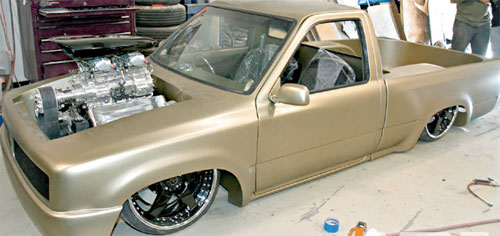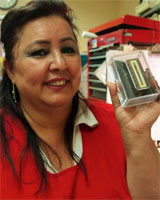Seymour Duncan’s Perspective on Tone
As everyone knows, to some extent “tone” is ultimately in the hands and heart. But your favorite guitar hero through a POS amp is going to sound like – someone with that guy’s chops through a POS amp. Won’t be the same as through the pro’s chosen rig, no way.
Another way of saying this is that the tone you hear inspires the tone you feel, which in turn becomes the tone that everybody else hears. (Sheesh, nice sentence – feel like I’m teaching a class or something…. You get what I mean.)
I get reminded of this all the time, the latest being in interview with Seymour Duncan in a book called The Guitar Pickup Handbook, published in 2008. (Don’t buy the book unless you absolutely, positively have to have everything ever written down about pickups.) Anyhow, Seymour had this to say about pickup tone and output:
- Besides the DC resistance of a pickup, there are several variables that can determine the tone and output of a pickup…. Some of the basic elements are the player’s choice of instrument and playing technique. The body and neck wood play an important role in the tone of the pickup: The same pickup can sound different in different types of instruments using different wood and manufacturing techniques. [Or the same model and year of guitar, just different pieces of wood.] Some things that can affect the tone and output of the pickup are:
1. String gauge, alloy and diameter, and string winding technique
2. Pickup construction and materials
3. Ferrous pole piece materials and shape
4. Magnet material, shape and gauss
5. Number of turns, winding pitch, winding tension, bobbin shape and dimensions
6. Machine- or hand-wound coils
7. Magnet wire dimensions and tolerances
8. Insulation material and thickness
9. Hookup wire [this is not a 900#!]
10. Potentiometer [vol and tone “pot”] values and tolerances
11. Guitar cord resistance and length
12. Pickup height [distance] to strings
13. Pickup placement to bridge and neck [distance from either]
14. Pickup mounting [surface of body, pickguard or mounting rings]
Wow! A perspective on tone from the pickup-maker’s level. Just in freakin’ case you thought dialing in your tone was easy! After reading those 14 factors (I add the numbers for reference), I kind of wonder if finding one’s tone isn’t more a shot in the dark than anything…but I can’t…make…myself…believe that.
From that list it’s easier to see why the same models of pickups can sound different from one another, and why some pickup makers (e.g., the famed “MJ” in Seymour’s custom shop) seem to have a mojo all their own.
Category: Seymour Duncan















